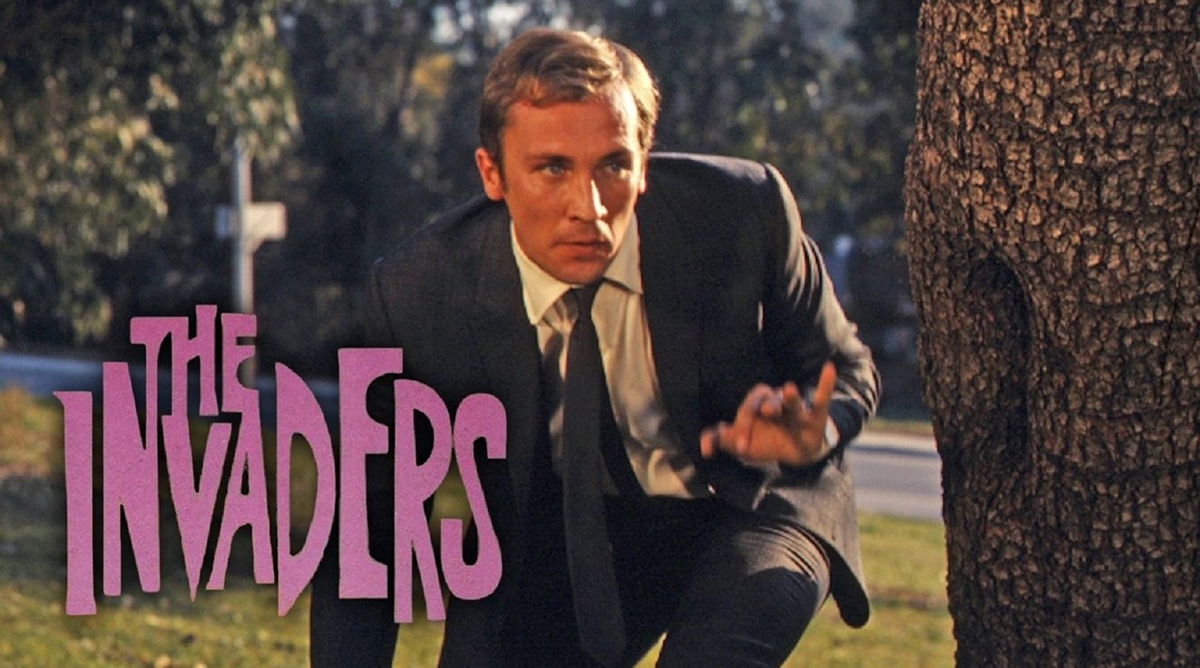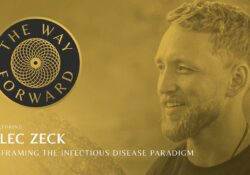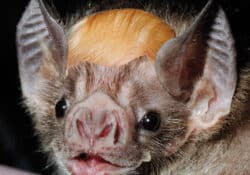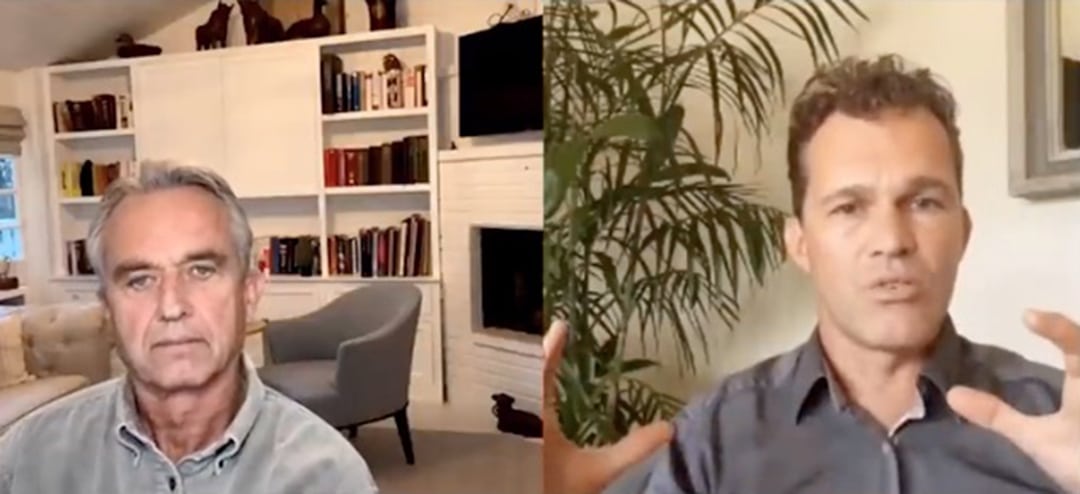

The Invaders
by Todd Hayden | Oct 1, 2022
Is anyone old enough to remember the Quinn Martin television series The Invaders starring Roy Thinnes as David Vincent? Vincent is an architect in the series who happens upon a UFO landing carrying aliens bent on taking over the planet.
The aliens managed to look like ordinary human beings (easy on the budget) with a few peculiarities that were subtle enough to keep them from being easily discovered. Some of these oddities included a weirdly deformed little finger, a heart that has no pulse, and blood that doesn’t bleed out (I guess that stands to reason considering no pulse).
For the 41 episode run (1967-1968) Vincent wanders around the country scouting for these heartless creatures, trying to convince others when he has discovered any. Of course he does just that in every episode and has a difficult time convincing folks that the deformed-pinkied-aliens are on earth to wreak havoc.
He has all kinds of adventures with these invaders, even falling in love with one of them (maybe more), some become friends before being discovered, and quite a few along the way are killed — conveniently disappearing in a puff of red smoke so no traces are left to expose the once living, grotesque, creature (they are indeed aliens and are only faking to look like humans—not pretty to look at under the guise of human skin).
The part of this story that is apropos to this article is the fact these aliens looked just like everyone else but did have some disparate features—not only physical, but psychological and behavioral as well. They were aliens, strange, different, untrustworthy—inhuman. But for all intents and purposes, from a distance at least, looked just like Uncle Joe and Aunt Phoebe.
Still don’t get the connection?
We now live amongst invaders.
But the kicker is that they are not aliens, they are human beings. The sheep in our midst are NOT from outer space (although their DNA may be scrambled enough they may as well be). But something is different about them, something that isn’t easy to pinpoint at a glance, but it is there.
This is just the thing that jumbles up stuff in our heads, this feeling that we just can’t put a finger on. But it is there—a person walking down the street on a nice sunny day donning a paper mask, a lone person in a car with a similar face covering, and dozens of high school kids leaving campus for lunch—many of them wearing masks. It just isn’t right; it presents a cognitive dissonance.
The masks seem to be the deformed pinky from The Invaders—a rather obvious physical attribute you can see plainly if presented. We usually don’t get close enough to check out the heartbeat, and of course there isn’t any correlation with that feature from the TV series and our own vaccinated sheep-types.
But there are indeed other things we can notice if the right setting presents itself—an unusual sense of fear regarding anything Covid related, a pandering loyalty to any sort of state authority, a complete trust in whatever that authority decides is best for them, an irrational glee in complying to mandates, vaccines, and manipulations as in, “I am doing this to be part of my community and follow orders for the good of the community”—all this with little critical reasoning or thought.
“So what?” one might say. “That is their business isn’t it?” To a point, yes, but we also have “human community” standards. Usually the “state community standards” coincide with the “human” ones, but it seems we are pulling further and further from that assumption.
A human community has standards regarding public behavior, public sexual conduct, wanton harm to others, and an intuitive “right way” to think. I know that is a dangerous thing to say considering our current attitude regarding diversity, equity and inclusion, but think about it.
Most things people do in private have little impact on our daily way of life so we let it be, but when a certain type of thinking and behaving is identified in public as being dangerous to ourselves and others we suddenly see how that may indeed affect our “human community standards” and we become rather concerned about it.
Think of a public Nazi display, or a crowd of people wearing KKK sheets, hoods, and other regalia. They appear to be a threat (maybe they are, or maybe they are not directly) and as a community we become concerned, to say the least. We don’t consider ourselves to be bigots if we are bothered by a crowd of swastika-wearing goose-steppers or hooded KKK members.
Are mask-wearing individuals taking a stroll on a public sidewalk the same as strolling Nazis? Of course not, but they may generate the same feelings of threat, uncertainty, distrust—as a potential to destroy our world, just as David Vincent’s invaders did to him.
A person who is willing to wear a mask while riding a bike in public becomes a danger, at least potentially, because something is suspect regarding their ability to think straight, and if there are enough of these types milling around, then our alarm bells go off.
“Danger, danger, Will Robinson, these here are invaders”—invaders in what we thought was a safe community. It seems strange to be making the same evaluation of vaccinated people as they did of us unvaccinated people—that they are dangerous, as we were considered dangerous. But there are distinct differences, one is that the unvaccinated are not dangerous, and never were.
The other is that I am not advocating that the vaccinated be treated any differently than any of us are treated. I am merely pointing out that if we feel strange around them, as if they are dangerous, what I am explaining here could be the reason. And we need to strive to make that reason conscious so we don’t start doing stupid things, like spitting on the guy walking down the street with a mask.
What is presented to us in a rather objective way is that we are faced with the fact that most people around us are not really to be trusted. They are not to be trusted to vote for people in office who are proper leaders, leaders in a country with a constitution that we have all thought for hundreds of years was pretty good in representing what we, as a human community, thought was just and right.
We cannot trust them to “do the right thing” with our children due to a “distorted” way of thinking that “just doesn’t fit” (see the latest news on some teachers in Ontario).
Is this all due to vaccination? Of course not, but I think you can safely say that the masses getting vaccinated and following this mainstream narrative are following the “form” of thinking I am describing here. And yes, it is not across the board, and any feeling we may have from it is largely (not completely) fabricated in our own mind—just as profiling and bigotry is.
So it is something we definitely have to get a handle on.
These people do indeed have the power to change our life radically in a negative way (leading us all to slavery, for one?) but we must keep conscious of the objective and rational reality of all of this and not allow sadness, confusion, disgust, or even hate and anger to take control.
I am not suggesting at all that we treat our fellow humans, vaccinated or not, as “invaders”—they have ALWAYS essentially been what they are today; we just didn’t notice it. There were no deformed pinkies to identify them, now there are.
It is hard to say what to do about this, but it is still very disturbing. In my own work as a psychotherapist one of the central intentions is to bring unconsciousness into consciousness. This is a case in point.
If we are somehow deeply disturbed by mask wearing, or whatever we experience that identifies an “invader” but become conscious of the true reasons we are disturbed, it will help by allowing the full story to emerge—these people are basically no different than they ever have been, and to forgive them, and love them for who they are, fellow human beings, but at the same time strive toward a culture that doesn’t create this way of distorted thinking for the generations to come.




